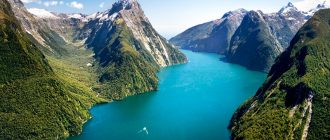Turkey – the most detailed information about the country with a photo. Attractions, cities of Turkey, climate, geography, population and culture.
Contents
Turkey (Türkiye Cumhuriyeti)
Turkey is a state in South-West Asia, a small part which is located in southern Europe. Located between Black and Mediterranean seas and also washed by the Aegean Sea. In the West Turkey borders with Bulgaria and Greece, in the northeast with Armenia, Azerbaijan and Georgia, in the southeast with Iraq, Iran and Syria. This is one of the most developed eastern countries, which is a secular state. The population speaks Turkish and is Sunni Islam.
Turkey is a country that emerged after the collapse of the Ottoman empire. Despite the fact that most of its territory (97%) Located in Asia, the country is often associated with Europe. Turkey can easily be called both the most eastern of the western countries, and the most western among the eastern. Her territory has amazing natural and cultural diversity: from ancient greek and roman the ruins to the heritage of Byzantium and the Ottoman Empire, from the sunny beaches Mediterranean and the Aegean Sea to semi-deserts of the southeast and harsh picturesque mountains of eastern Anatolia. Turkey is like a small continent full of amazing discoveries and wonderful places
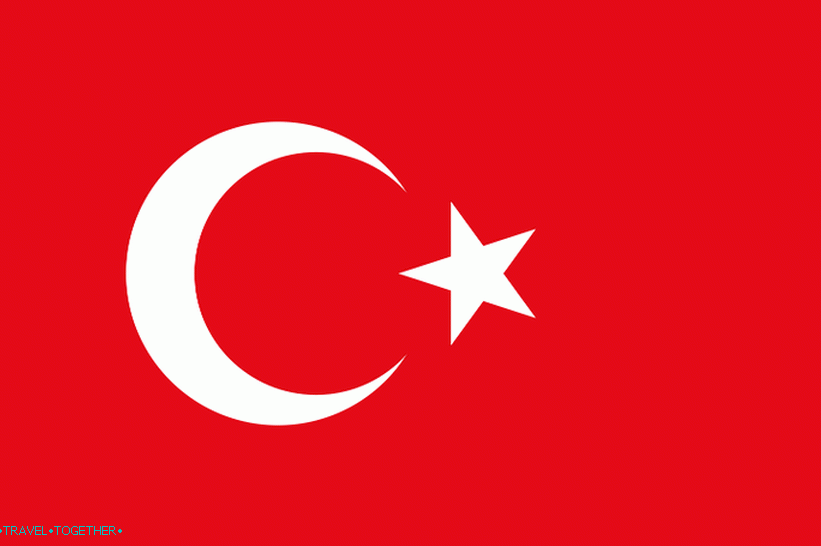 Flag of turkey
Flag of turkey
- Useful information
- Geography and nature
- Climate
- Story
- Administrative division
- Population
- Transport
- Cities of Turkey
- sights
- Accommodation
- Kitchen
Useful information
- The official language is Turkish.
- The currency is Turkish Lira. On popular resorts you can easily pay in dollars or euros. Also most shops, cafes, Gas stations accept bank cards.
- Visa – for up to 60 days it is enough to have a passport whose actions are more than four months from the date of entry into Turkey
- The standard of living is high.
- The population is about 80 million people.
- Area – 783,563 square kilometers.
- The capital is Ankara.
- Time – UTC +3.
- Public holidays: January 1 – New Year, April 23 – Children’s Day and Independence Day, May 1 – Labor Day, May 19 – Youth and Sports Day, Ataturk Arrival in Turkey, August 30 – end of the war of independence, October 29 – Republic Day, 10 November – Ataturk Memorial Day (the day of death of the founder of the Turkish Republic).
- The main religious holidays: Ramadan and Kurban Bayram. Ramadan – monthly post, the start date of which depends on the lunar calendar and falls in April – May. During Ramadan, Muslims do not eat and do not drink water, so some cafes (this is especially true for non-touristic regions) may be closed. This does not apply. liberal tourist regions in which religious traditions not particularly strong. Kurban Bayram – the main Muslim holiday. Lasts a few days. During this period, almost all places are closed.
- Bargaining in Turkey is almost mandatory when any purchase (except chain stores and restaurants).
- Tax Free is from 18 to 23%. Look for the appropriate inscription in the store.
- Popular souvenirs and shopping: leather clothing, silk, carpets, pottery and ceramics, tea and coffee, honey, olive soap.
Geography and nature
Turkey is located at the intersection of paths that connect Europe and Asia, the Black Sea and the Mediterranean. Country territory located in two parts of the world at once – Europe (3%) and Asia (97%). Turkey occupies the Anatolian peninsula, the Armenian Highlands and a small part of the Balkans. In the north it is washed by the Black Sea, on west – the Aegean, in the south – the Mediterranean. European and Asian parts of Turkey are separated by the Sea of Marmara, which connects with the Black Sea and the Aegean Straits Bosporus and Dardanelles.
Turkey is a predominantly mountainous country. Mountains and plateaus occupy most of its territory. Average height above level sea about 1000 m. Due to the relief the territory of the country is extremely diverse in terms of nature, and the climate has altitudinal zonality. The largest mountain systems: the Pontic Mountains, Taurus, Anatolian plateau.
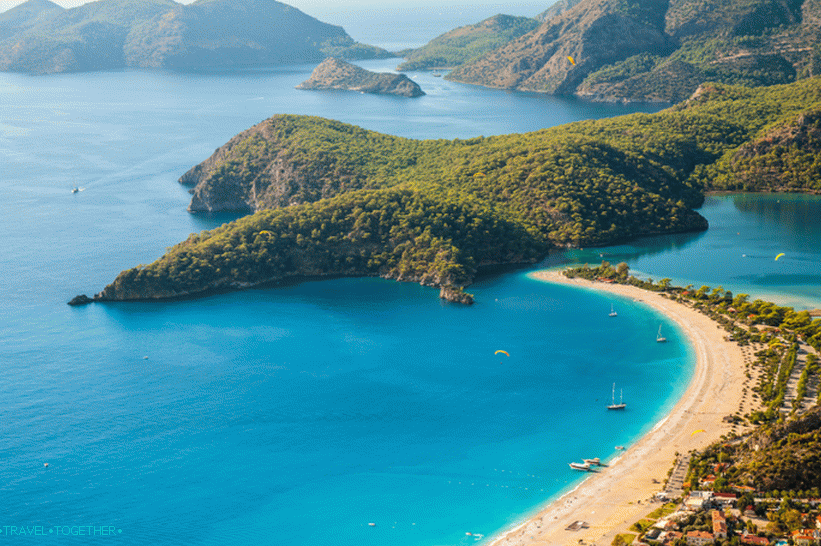 Mediterranean Sea
Mediterranean Sea
Turkey is a country with a rich flora and fauna thanks to climate and landscape diversity. Here you can meet the swamps, mountain forests, steppes, semi-deserts, subtropics. Vegetable world has about 10,000 species (for comparison, across Europe, 13,000 plant species), of which every third is endemic. The woods occupy 25% of the territory.
Climate
Turkey is mostly a mountainous country, so the climate is often has altitude zonality. In the central part of the climate is temperate. Continental with hot and dry summers and rather cold winters. On the coast of the Aegean and Mediterranean seas climate Mediterranean with a very mild winter. On the Black Sea coast the climate is sea with a lot of precipitation and cool winters with rare negative temperatures. The climate is southeast tropical desert with very hot summers.
 Trabzon in winter
Trabzon in winter
Story
The territory of Turkey has been inhabited since ancient times. Already in the era Neolithic existed here several archaeological cultures. On the territory of Turkey is the oldest urban settlement Chatal-Guyuk, which originated more than 10,000 years ago. In the second millennium BC on the territory of Central Anatolia was formed the kingdom of the Hittites. Later the Greeks came to the land of Turkey and the Romans.
In the 4th century, the formation of Byzantium (Eastern Roman empire), which after the collapse of the Roman Empire becomes one of most powerful ancient states. The greatest flowering of the state during the reign of Emperor Justinian, in which managed to join many lands of the former great empire and consolidate the status of the most powerful state of the Mediterranean.
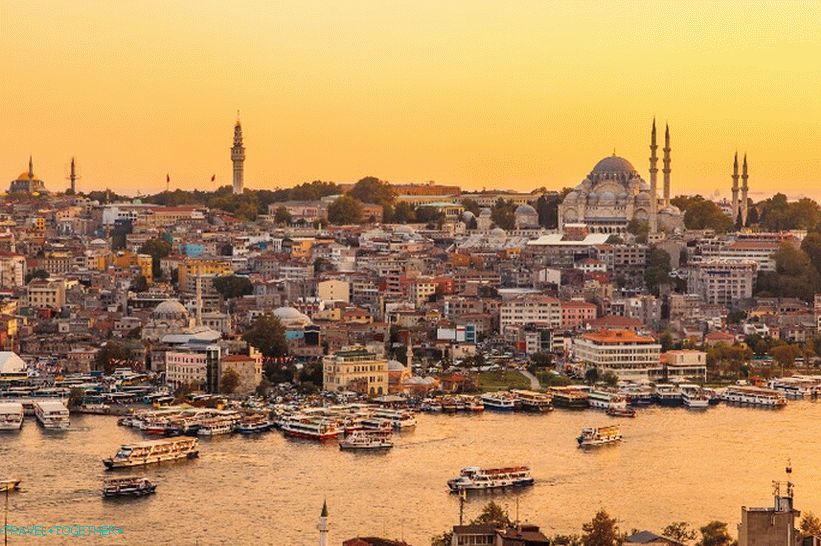 Istanbul (formerly Constantinople)
Istanbul (formerly Constantinople)
Interestingly, the Byzantines themselves called themselves Romans or Romei, and their state Empire of the Romans or Romagna. AT Western Europe often called Byzantium the Empire of the Greeks, and in Russia Greek kingdom. The permanent capital of the country was Constantinople. (in Russia – Tsargrad), founded in the 4th century by the Roman emperor Constantine on the site of the Greek city of Byzantium. Konstantin officially moved here the capital of the Roman Empire in 330 year
In the future, Byzantium gradually lost land and influence. The empire was crowded with Slavs, Lombards, Visigoths, Arabs, Seljuks. AT In the 8th-9th century, once a huge state occupied only Greece and Malaya Asia In 1204 Constantinople was taken by the crusaders. And at 15 century Byzantium fell under the onslaught of the Ottomans.
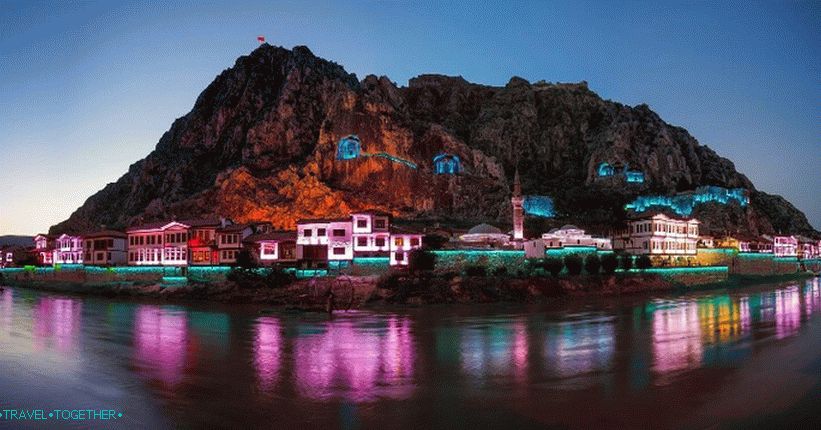 Amasya – ancient capital of the Pontic kingdom
Amasya – ancient capital of the Pontic kingdom
The Ottoman Empire was founded in the 13th century by Osman Gazi. She is quickly spread its power over most of Byzantium. In 1453 the Ottomans seized Constantinople. By the 17th century the Ottoman Empire reached its peak, conquering the territory of Anatolia, Middle East, North Africa, the Balkan Peninsula. The state of the Ottomans constantly threatened the southern borders of the Russian empire, which resulted in several major military conflicts: Crimean war, Russian-Turkish war of 1877-1878. From the 18th century into The Ottoman Empire is facing a crisis that peaks in 19th century.
During the First World War, the Ottoman Empire was part of Fourth alliance and was opposed to the Entente. In 1918 was a peace treaty was concluded that actually meant defeat Turkey in the war and the collapse of the empire. In 1919, the war begins for independence, led by General Mustafa Kemal. AT As a result, the Republic of Turkey was formed, and Kemal was elected president of Turkey and received an addition to the name Ataturk (which means “father of all Turks”).
During World War II, Turkey tried to keep neutrality, while allowing the passage of the German navy through the Bosphorus and the Dardanelles. March 25, 1945 the state declared war Germany and joined the winners. After the war in Turkey became a multiparty system was being formed, a new one was adopted Constitution, there was a reformation of Islam and the transformation of the country into secular state. Since 2004, accession negotiations have been ongoing. Turkey to the European Union.
Administrative division
The territory of Turkey is divided into 81 silts, which is controlled by the governor. Elahs are divided into Ilche. Geographically The country can be divided into 7 regions:
- The Aegean region (Ege Bölgesi) is the western coast of Turkey, where there are greek and roman ruins, olive groves and excellent the beaches.
- The Black Sea region (Karadeniz Bölgesi) – forests and mountains, magnificent nature and modern cities.
- Central Anatolia (Anadolu Bölgesi) – hilly steppes with poor vegetation. Here is the capital of Turkey, Hittite and Phrygian ancient ruins, incredible Cappadocia.
- Eastern Anatolia (Doğu Anadolu Bölgesi) – severe high mountains with cold winters.
- The coast of the Sea of Marmara (Marmara Bölgesi) is the most urbanized region with magnificent Istanbul sights of the period of ancient Byzantium and Ottoman empire.
- Mediterranean region (Akdeniz Bölgesi) – magnificent resorts, charming seaside towns, ancient ruins and beautiful nature.
- Southeast Anatolia (Güney Doğu Anadolu Bölgesi) – hot semi-desert
 Regions of Turkey
Regions of Turkey
Population
The population of Turkey is about 80 million people. 75% refers to ethnic Turks themselves. About 10% are Kurds. Pretty large is the Armenian diaspora. The official language is Turkish, which belongs to the Turkic branch of languages. Interesting that The Altai Mountains are the historical homeland of the Turks. Since 1928 in In Turkish, Latin letters are used.
In Turkey, religion is officially separated from the state and guaranteed freedom of religion. Overwhelming majority The population is a Sunni Islam. Continental and The southeastern part of the country is more conservative in terms of religion and traditions.
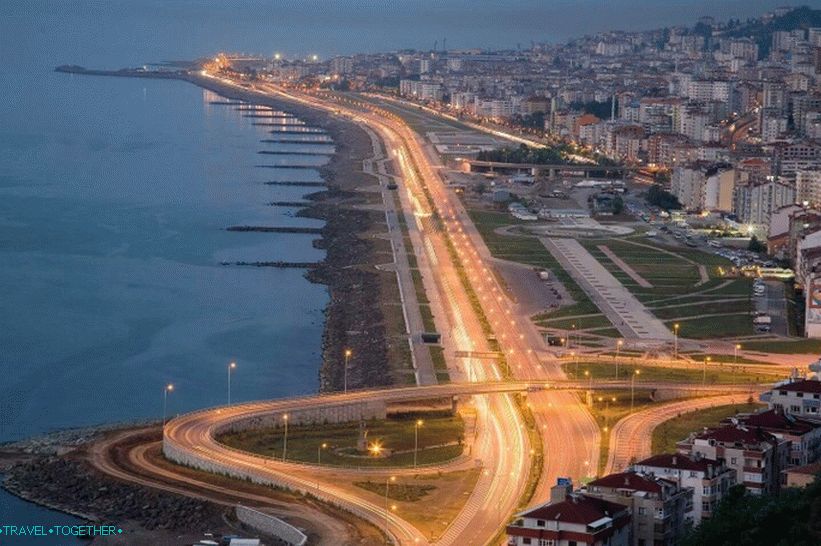 Black Sea coast of Turkey
Black Sea coast of Turkey
Turks are for the most part welcoming, hospitable and quite temperamental. However, they are often optional, have a big ego, can be very jealous, touchy and scandalous. In relationship much attention is given to trust, possess excessive national proud, but rather tolerant of foreigners. Turks are not love criticism and they have very strong family and related communication.
Transport
The main air gateway of Turkey – the international airport named Ataturk in Istanbul. Ankara Airport offers relatively a small number of international destinations. 50 km from Istanbul Sabiha Gokcen Airport, which most of them arrive low cost carriers. Many directions Antalya Airport offers (especially during the holiday season). Other major air ports are located in Alanya, Bodrum, Dalaman, Izmir
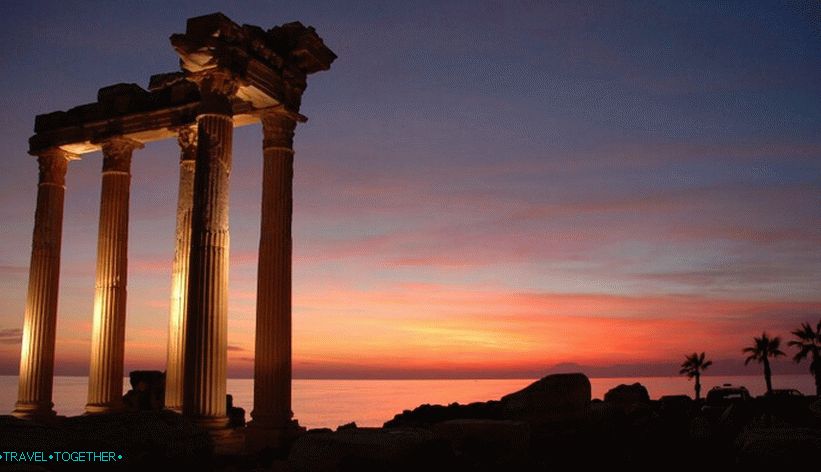 City of Side
City of Side
You can get to Istanbul by train from Budapest, Bucharest, Sofia, Belgrade. But this is not the fastest mode of transport. Much It is more practical to choose a bus or a car. Highways connect country with Bulgaria, Greece and Georgia.
Turkey has a well-developed bus network. The bus is main (and sometimes the only) long-distance transport. Turkey because of the difficult terrain, it has only 11,000 km of railways, so even some major cities do not have access to rail service. Between Istanbul and Ankara high-speed railway line. Also modern line connects Turkey’s largest city with Edirne.
 Konya is one of largest cities of Turkey
Konya is one of largest cities of Turkey
Turkey has a good road network. Most highways free Toll roads have three lanes for each directions marked with green signs and numbers prefixed “ABOUT”. Currently there are two such highways: Istanbul – Ankara, Izmir – Adana. Automatic payment by transponder is provided. (OGS) and prepay (KGS), for which you need to buy special card and replenish its balance. At the entrance to the paid the highway needs to attach the card to a special machine. The same the procedure must be carried out on the road.
The maximum amount of alcohol in the blood for drivers is 0.5.
Cities of Turkey and directions
 Istanbul
Istanbul
Istanbul is the largest city of Turkey and one of the largest cities of the world. Has a unique location, being immediately in Europe and Asia. This is the former capital of ancient Byzantium and the Ottoman Empire, a city with a rich cultural and historical legacy.
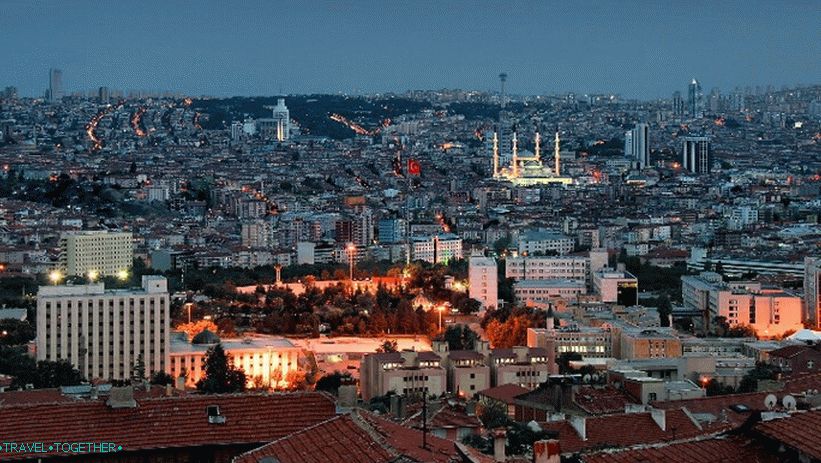 Ankara
Ankara
Ankara is the capital of Turkey and the country’s second largest city. Located in the heart of the state in Central Anatolia. it large modern city, full of state and educational institutions.
Bodrum is a trendy coastal city in the south of the Aegean Sea, which summer is full of tourists. Here you can look at the Roman the ruins, have fun in trendy clubs and visit the charming seaside towns.
 Antalya
Antalya
Antalya is one of the most dynamic and fast-growing cities. Turkey, the capital of the Turkish Mediterranean.
Bursa is the first capital of the Ottoman Empire, a historic city in northwestern Turkey off the coast of the Marmara seas.
Edirne is the second capital of the Ottoman Empire, an ancient city with rich cultural heritage. Located in Eastern Thrace near the borders with Greece and Bulgaria.
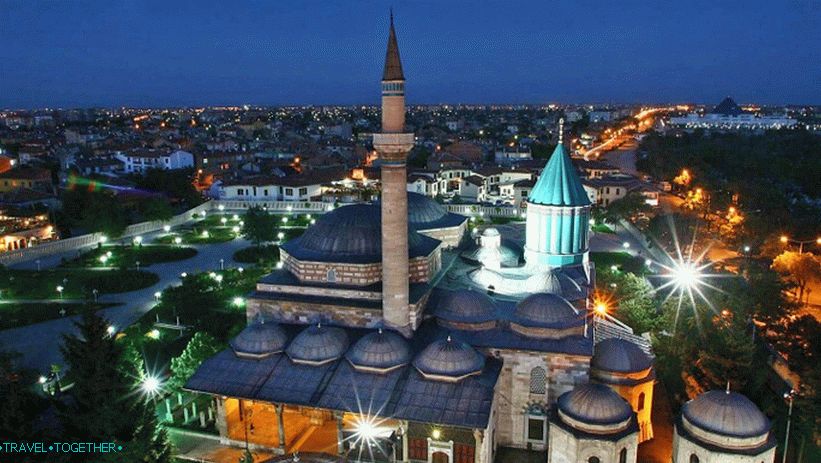 Konya
Konya
Konya is one of the largest cities in Central Anatolia, which is the center of the mystical Sufi order and place burial of the famous Persian poet Rumi. Known architecture of the Seljuks period and conservatism.
Izmir is the third largest city in Turkey and the second port after Istanbul Wide boulevards, glass facades and modern shopping centers are combined with traditional red tiled roofs, old mosques and churches. The atmosphere in the city Mediterranean Europe.
 Urfa
Urfa
Trabzon is a major city and port in the north of Turkey on the Black Sea coast. Here are some interesting attractions of the Byzantine era.
Urfa is a magical city with beautiful architecture and extremely friendly locals where Turkish, Kurdish, Arab and Persian cultures.
 Cappadocia
Cappadocia
Interesting directions:
- Ani – the impressive ruins of the medieval Armenian capital on far east of the country.
- Cappadocia is an area in the central highlands known for its unique “lunar” landscape and cave cities, as well as balloons that run every morning.
- Ephesus – the well-preserved ruins of a Roman city on the west coast of Turkey.
- Mount Nemrut – UNESCO World Heritage Site with amazing statues on top dedicated to the ancient gods.
- Oludeniz – a small resort town on the shores of the Mediterranean sea, near which is the most famous beach in Turkey.
- Pamukkale (Cotton Castle) – striking white travertines, cascading pools of blue thermal water and the ruins of antique Hierapolis (Hierapolis).
- Panagia Sumela is an ancient Orthodox monastery located in the picturesque mountains near Trabzon.
- Uludag – the main winter resort of Turkey, located in the southern parts of the Sea of Marmara.
- Amasya – a charming city with ancient tombs of Pontus kingdom and Ottoman houses surrounded by apple orchards.
sights
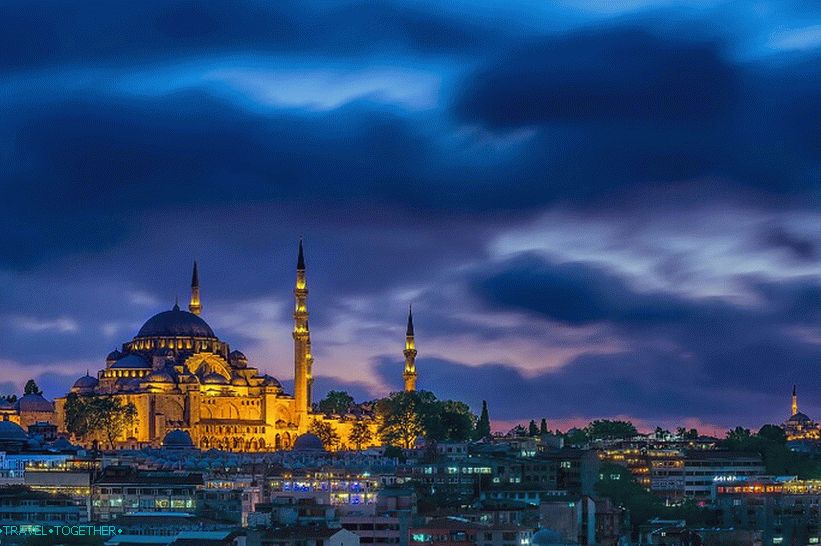 Hagia Sophia
Hagia Sophia
Hagia Sophia is a symbol of Turkey and one of the main the sights of Istanbul. This is one of the most famous buildings. in the world, built in the 6th century on the orders of Justinian as Christian temple. For 1000 years, it was the largest volume of construction in the world. After conquest Constantinople, the Ottomans transformed the building into a mosque. Here now the museum is located. Former Cathedral of Sts. Sofia is surrounded by minarets, and inside there is a luxurious interior with frescoes that resembles about the greatness and wealth of Byzantium.
 Blue Mosque
Blue Mosque
The Blue Mosque is a famous landmark of Istanbul. built in the early 17th century. This is a grand building with six minarets, whose ceiling is decorated with 20 thousand blue tiles with various patterns.
 Cappadocia
Cappadocia
Goreme National Park – a fantastic place and a gem Cappadocia: fabulous rocks formed by wind and rain, cave cities and famous balloons that soar into the sky is at dawn.
 Great mosque in Divrigi
Great mosque in Divrigi
The great mosque in the city of Divrigi is a masterpiece of architecture of the era Seljuks, erected in the 13th century. Is the subject of the World UNESCO heritage.
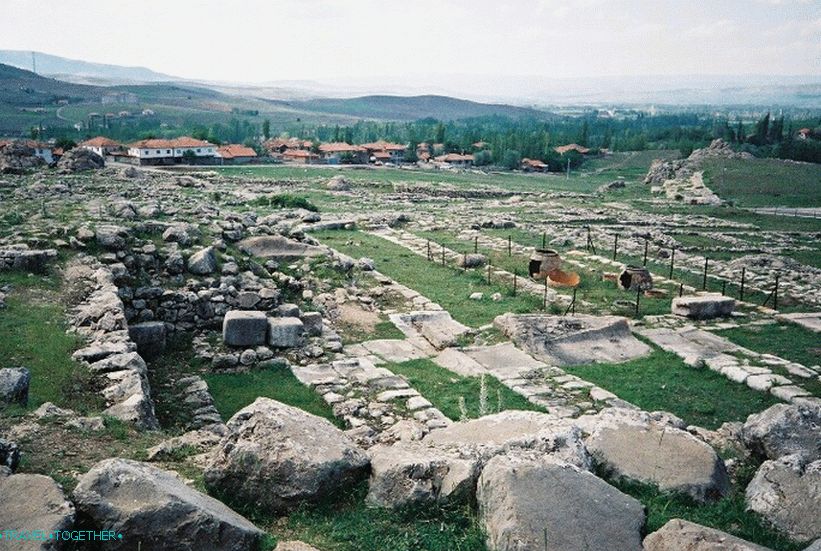 Hattus
Hattus
Hattusa – the capital of the ancient Hittite state, the ruins of the ancient city near Bogazkale.
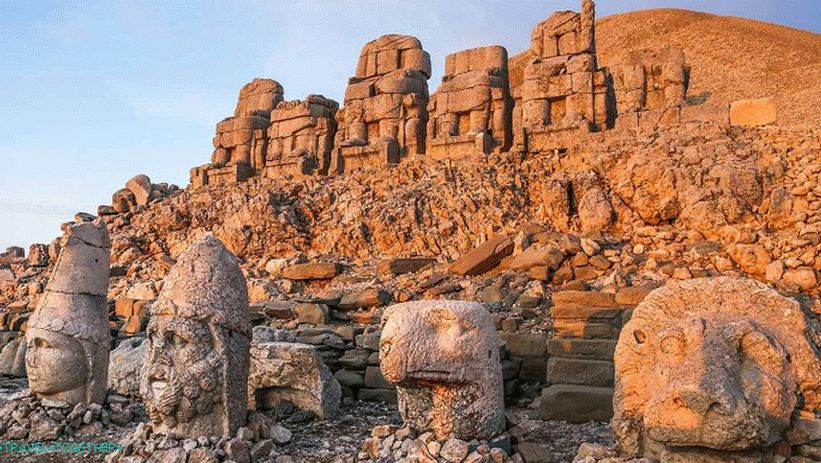 Mountain Nemrut
Mountain Nemrut
Nemrut Mountain is one of the most unusual places in Turkey, where giant stone heads of long-forgotten gods look from her peaks, giving everything a bit of a creepy atmosphere.
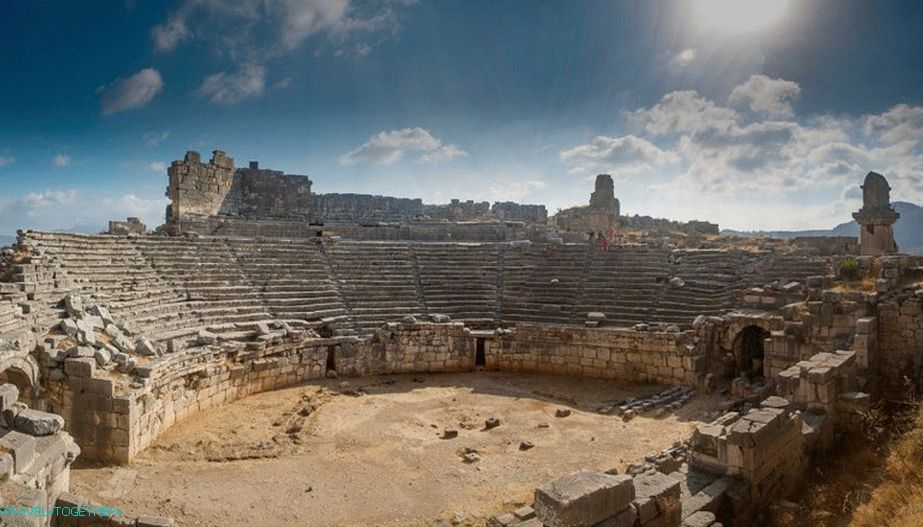 Xanthos
Xanthos
Xanthos – the ruins of the largest city of ancient Lycia, located on the territory of Antalya. The settlement was founded about 3 thousand years backwards The most famous of its attractions are the temple Letoon, amphitheater and ancient tombs.
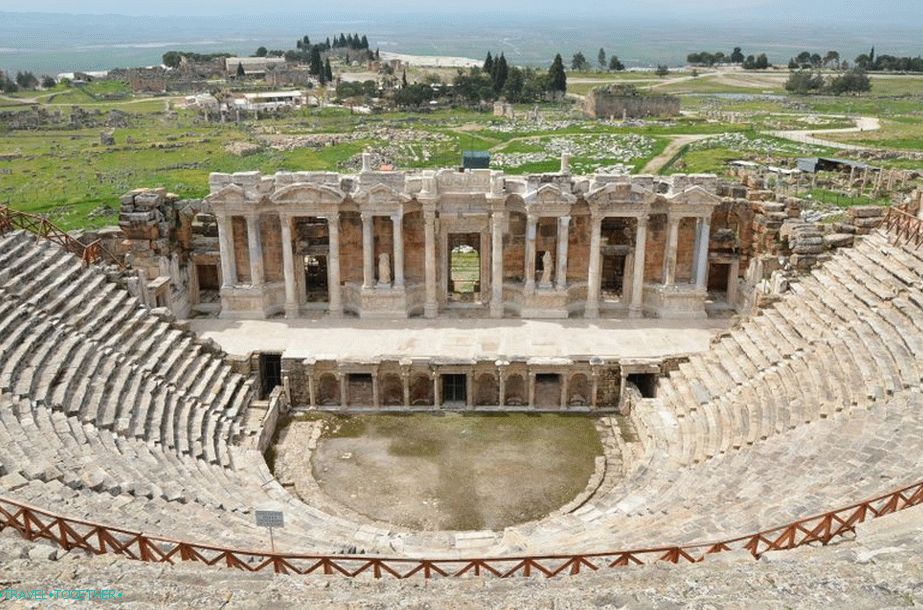 Hierapolis
Hierapolis
Hierapolis (Hierapolis) – one of the ancient cities founded Phrygians Located in Pamukkale.
 Safranbolu
Safranbolu
Safranbolu is a wonderful Anatolian city with a unique historic atmosphere, ancient mosques and traditional architecture.
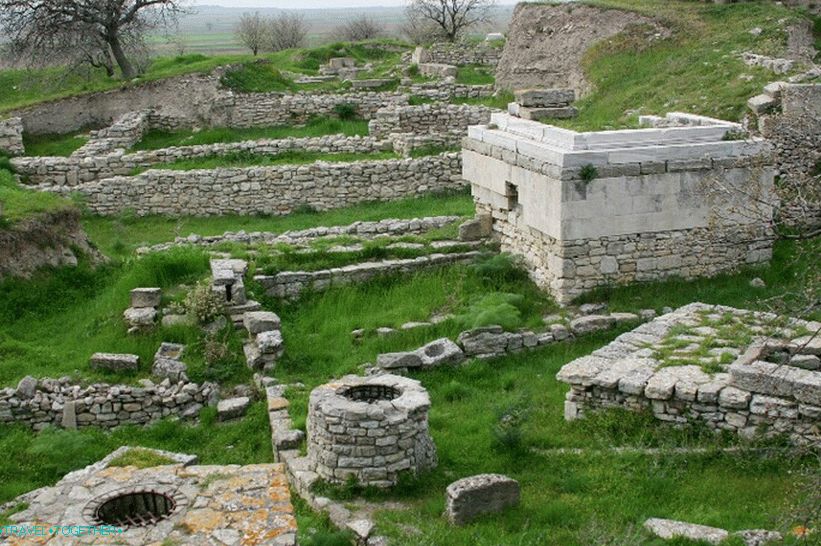 Troy
Troy
Troy – the ruins of the legendary ancient city-state. it’s one of the most famous archaeological sites in the world, sung Homer. Located near Canakkale.
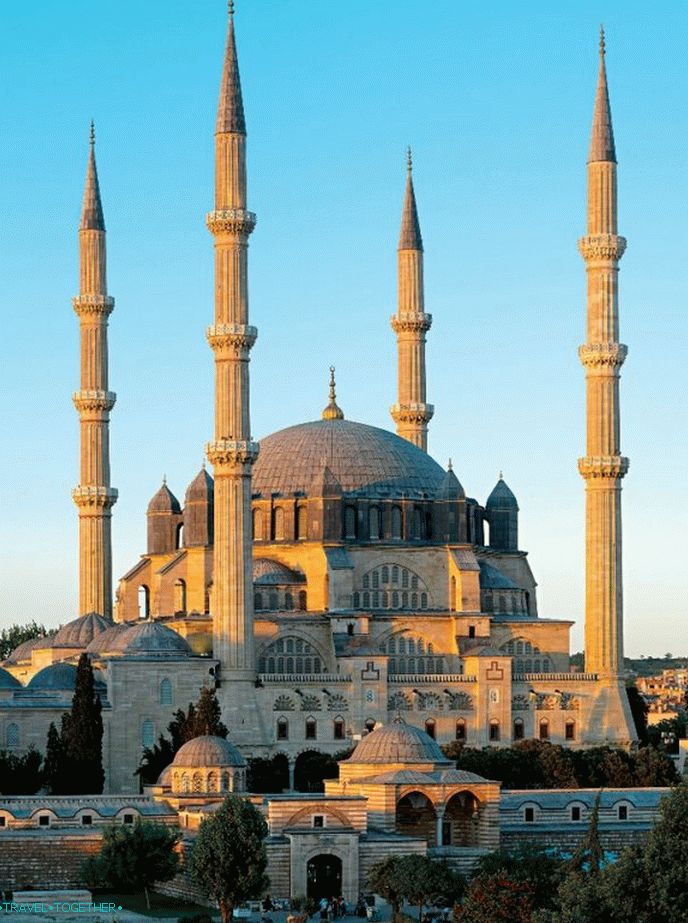 Selemije Mosque
Selemije Mosque
Selemieh Mosque – a masterpiece of architecture of the Ottoman Empire, located in the city of Edirne. The building with a monumental dome and Four slender minarets were built in the 16th century and are considered the standard of Islamic religious architecture.
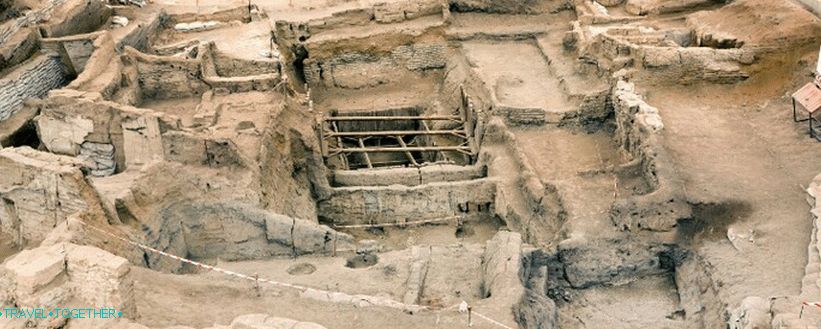 Chatal-Guyuk
Chatal-Guyuk
Chatal Guyuk (Chatalkhyuk) – the oldest city in the world, which was founded more than 10 thousand years ago.
 Pergamum
Pergamum
Pergamum (Pergamon) – the ruins of an ancient city, the capital of the ancient States of the Attalid dynasty. This is one of the centers of culture. Hellenism, an outstanding example town planning of that period. Here preserved the ruins of ancient temples and buildings, fragments of ancient engineering systems and the most beautiful theater of the Hellenistic period.
 Bursa
Bursa
Bursa is the first capital of the Ottoman Empire, located on northwestern slopes of the Uludag mountain. The historical center of this The city is known for its ancient architecture and historical the atmosphere.
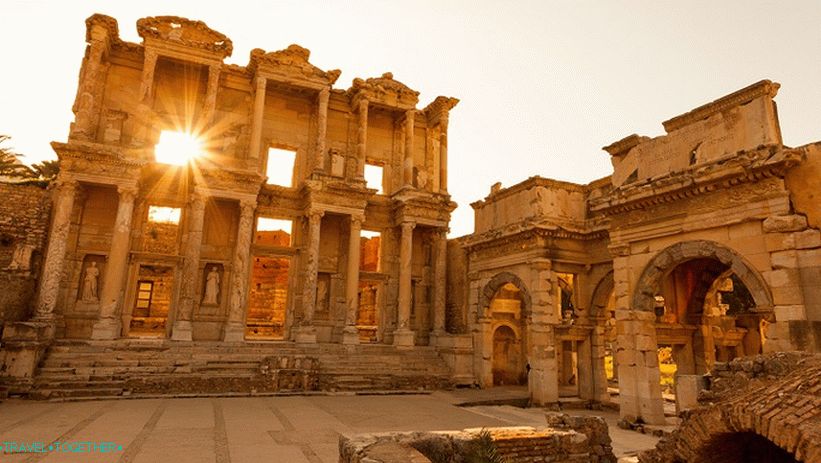 Hilt
Hilt
Ephesus – the ruins of the Hellenistic and Roman settlements at the mouth of the river Kaystros. The ancient city is an outstanding example of the Roman urban planning. Famous Landmarks: Ruins Temple of Artemis (one of the seven wonders of the world), the ruins of the Roman library Celsus, founded by Emperor Hadrian, is an ancient theater.
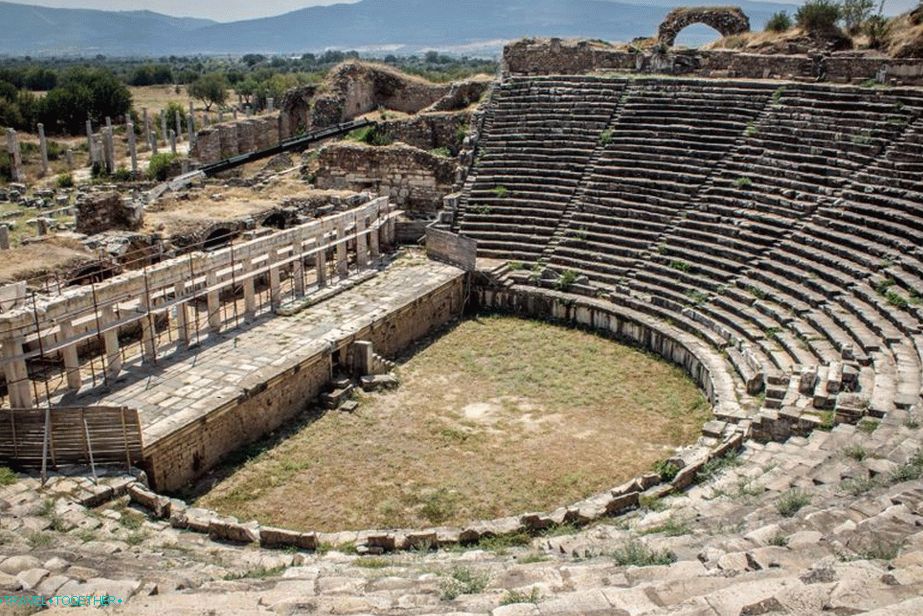 Aphrodisia
Aphrodisia
Aphrodisia (Aphrodisias) – Ruins of an Ancient City in the Southwest Turkey The archaeological site consists of the ruins of an ancient settlements and marble quarries to the northeast. Here you can look at the theater, the ruins of the ancient temple and civil structures.
 Gobekli Tepe
Gobekli Tepe
Gobekli Tepe – one of the largest archaeological discoveries 21 century, the ancient megalithic structure. More than 12 were built thousands of years ago. Gobekli Tepe is 4 thousand years older than Egyptian pyramids and for 7 thousand years – Stonehenge.
 Ani
Ani
Ani is a medieval city, the ancient capital of the Armenian kingdom. Bagratids.
 Aspendos
Aspendos
Aspendos – the ruins of the ancient city near Antalya with beautifully preserved Roman theater.
Accommodation
Accommodation in Turkey varies from luxurious 5-star hotels, hotels like All Inclusive, cheap apartments and campgrounds. Such well-known networks operate here: Hilton, Sheraton, Ritz-Carlton, Conrad. Find a hotel in Turkey by your own preferences and financial capabilities are not a problem, especially if do it in advance.
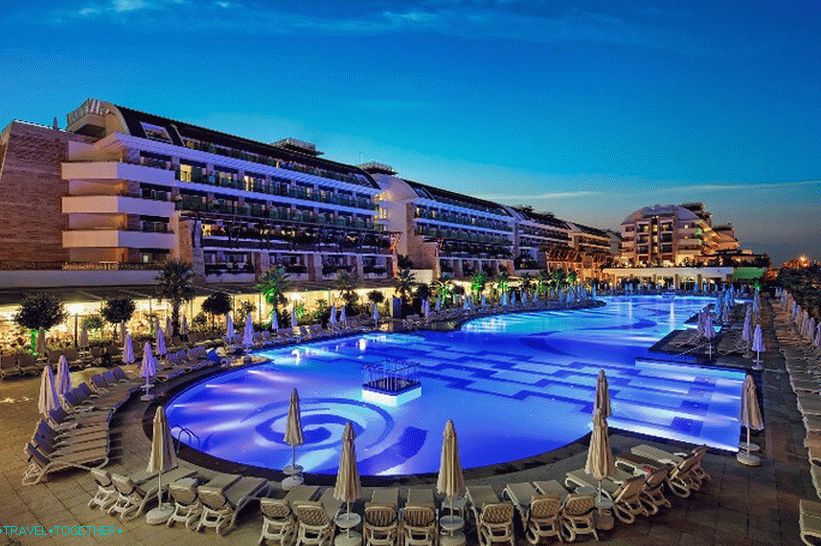 Turkish hotel
Turkish hotel
Kitchen
Turkish cuisine combines Mediterranean, Eastern European, Caucasian and Levantine influences are therefore quite rich and peculiar. It includes a large amount of spices, rice, vegetables (eggplants, onions, lentils, legumes, tomatoes, garlic, cucumber, cabbage, various types of lettuce). The most common meat is beef and lamb. Since Turkey is still Islamic There is practically no pork country here. Also in the main dish usually included side dish, vegetables and bread.
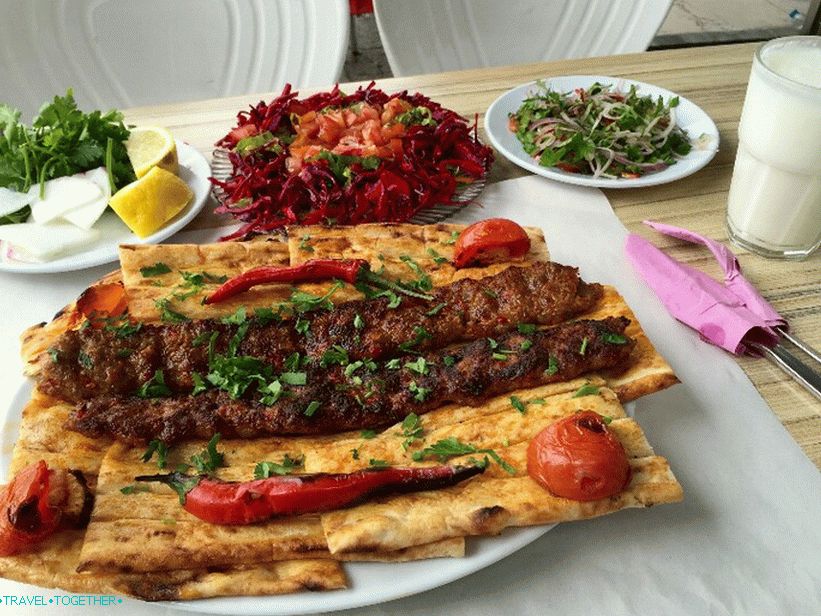 Traditional Turkish kebab
Traditional Turkish kebab
Traditional Turkish restaurants offer a selection of ready-made dishes. Kebapçis are restaurants that specialize in kebabs. AT fish restaurants you can enjoy only fish and seafood. Döner kebap – inexpensive traditional street fast foods. Other traditional food: köfte, kokoreçci, midyeci, tantunici, mantıcı, gözlemeci, lahmacuncu, pideci, çiğ köfteci. In many restaurants and cafe missing alcohol. From the drinks, the Turks prefer ayran, coffee, tea, bosa, salep. Of alcoholic beverages spread beer Tekel Birası and Efes plants, wine.





